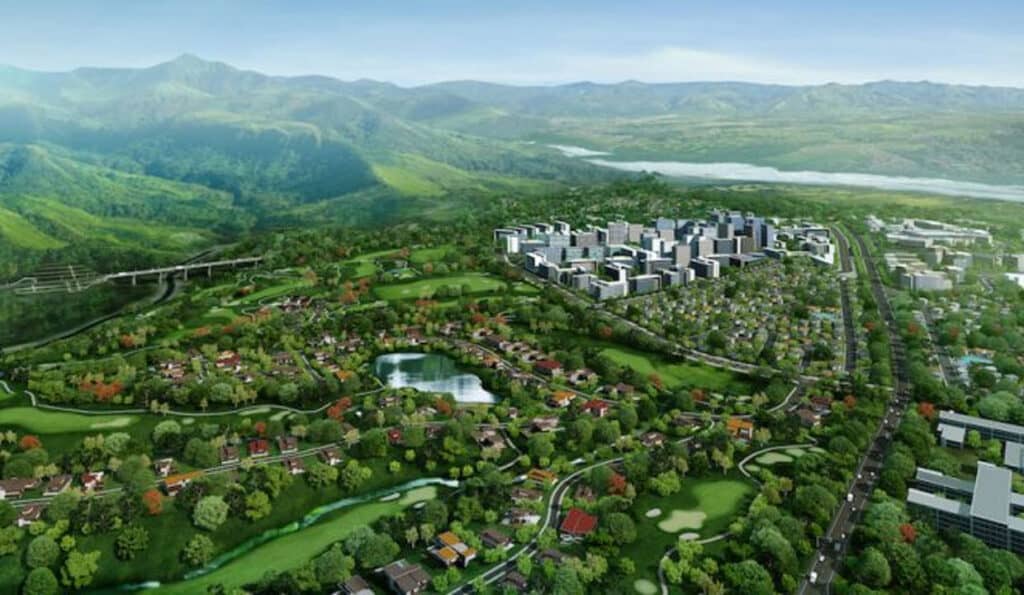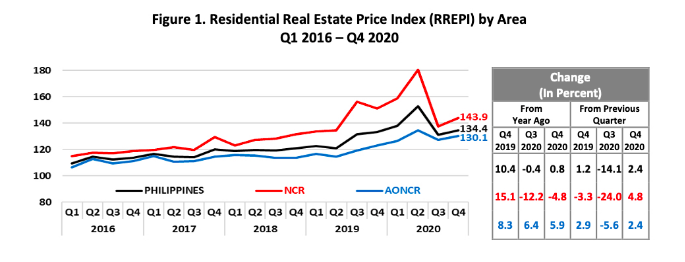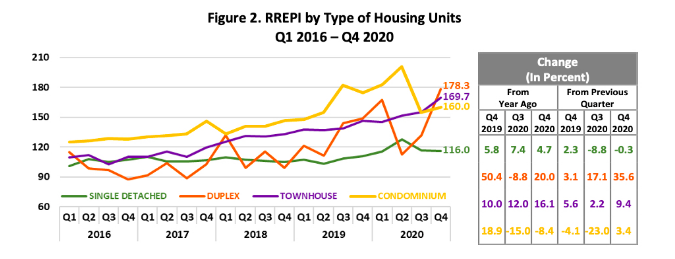
Amid the surging COVID-19 cases, the exodus from mega Manila to avoid lockdown and strict quarantine measures resulted to an uptick in property prices nationwide.
The Bangko Sentral ng Pilipinas (BSP) reported the country’s residential real estate price index (RREPI) inched up by 0.8 percent to 134.4 percent in the fourth quarter of last year from 133.3 in the same quarter in 2019.
The RREPI, launched in the first quarter of 2016, booked its first year-on-year decline when it slipped by 0.38 percent to 131.2 in the third quarter from 131.7 in the same quarter in 2019 due to the impact of the pandemic.
The RREPI, used as an indicator for assessing the real estate and credit market conditions in the country, increased by 2.4 percent quarter-on-quarter.
“House price growth reverted to the positive territory,” the BSP said in the report.
Residential property prices in the National Capital Region (NCR) slumped for the second straight quarter as it contracted by 4.8 percent to 143.9 in the fourth quarter, while areas prices in areas outside NCR went up by 5.9 percent to 130.1.

Nicholas Mapa, senior economist at ING Bank in Manila, said the exodus has pushed up housing prices for larger units with Filipinos seeking refuge from suffocating city lockdowns.
“The Philippines is mirroring the global exodus out from major cities with city dwellers trading in their flats for the clean and green of the suburbs outside the concrete jungle,” Mapa said.
He added the ongoing lockdown has spawned a growing army of plantitos and plantitas who are shifting to clean and green as the new standard.
Data showed the price of duplexes nationwide rose by about 20 percent to 178.3 from 148.6, followed by the price of townhouses that increased by 16.1 percent to 169.7 from 146.2, and that of single detached or attached units that inched up by 4.7 percent to 116 from 110.8.
On the other hand, the price of condominium units declined by 8.4 percent to 160 in the fourth quarter of last year from 174.6 in the same quarter in 2019 as the COVID-19 pandemic resulted to the suspension of operations including that of Philippine offshore gaming operators (POGOs).
“All types of dwellings saw price increases save for condominiums with the current lockdowns likely ushering a shift in market preference from work proximity to space and breathing room,” Mapa said.

The BSP said the slowdown in residential real estate loans granted for all types of new housing units nationwide eased to 3.6 percent in the fourth quarter after plunging by 43.3 percent in the third quarter as banks remained risk averse due to concerns about the capacity to borrowers to pay amid uncertainties caused by the global health crisis.
In the fourth quarter, the purchase of new housing units accounted for 83.4 percent of total residential real estate loans. Most were used for the acquisition of condominium units with 42.2 percent, followed by single detached or attached houses with 30.5 percent and townhouses with 26.9 percent.
Despite the 2.4 percent contraction in bank lending in January, disbursements to the real estate sector increased by 5.7 percent to P1.76 trillion and accounted for 19.7 percent of the total loans.
The BSP’s Monetary Board raised the loan limit to the real estate sector by universal and commercial banks to 25 percent of total loan portfolio from the previous 20 percent last August to free up P1.2 trillion for lending to the sector.
S&P Global Ratings and Fitch Ratings earlier warned the banking sector’s exposure to the local property market is a cause for concern as a sharp correction in the real estate prices could put the industry’s underwriting standards to the test.
Mapa said there have been persistent fears of a housing bubble that may have approached worrisome conditions prior to COVID-19 pandemic.
“But now with the economy in recession and the previous POGO support dwindling for condominiums, we’ve seen how the housing market may have had cleared out some froth just as Filipinos whipped up their Dalgonas in lockdown.
The Philippines slipped into a recession with a record gross domestic product (GDP) contraction of 9.5 percent in 2020 as the economy stalled when Luzon was placed under enhanced community quarantine in the middle of March last year to slow the spread of the COVID-19.
“The resultant recession may have jolted the previous world order with shifting preference now driving economic activity toward areas outside of NCR, a welcome development in its own right,” the economist said.
For this year, economic managers are expected a bounce back with a GDP growth of 6.5 to 7.5 percent.
Article and Photo originally posted by Property Report Ph last March 26, 2021 and written by Lawrence Agcaoili.







More Stories
Vista Land Celebrates 50 Years with Sandiwa: An Event Honoring Leadership, Legacy, and the Filipino Dream of Homeownership
Vista Land Celebrates Love Month in Ilocos Region
Vista Land Bridges Cebuano Heritage and Progress with Valencia by Vista Estates